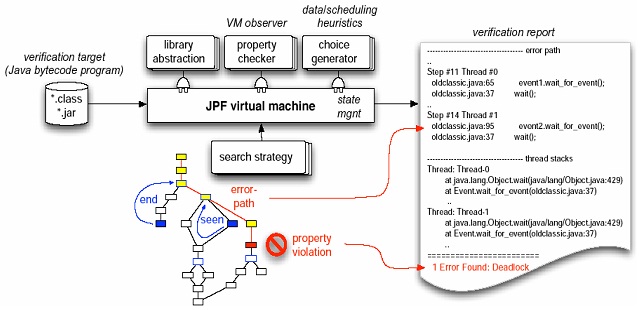Java PathFinder: Java PathFinder (JPF) is a model checker that has been developed as a verification and testing environment for Java programs (Figure shown below). It is available as open source at SourceForge.net (JPF website). It consists of a custom-made Java Virtual Machine (JVM) that interprets bytecode, combined with a search interface to allow the complete behavior of a Java program (including all interleavings of concurrent programs) to be analyzed. JPF itself is implemented in Java and its architecture is highly modular and extensible to support rapid prototyping of new features. JPF works at the bytecode level, and therefore it can uncover errors at both source and bytecode levels.
